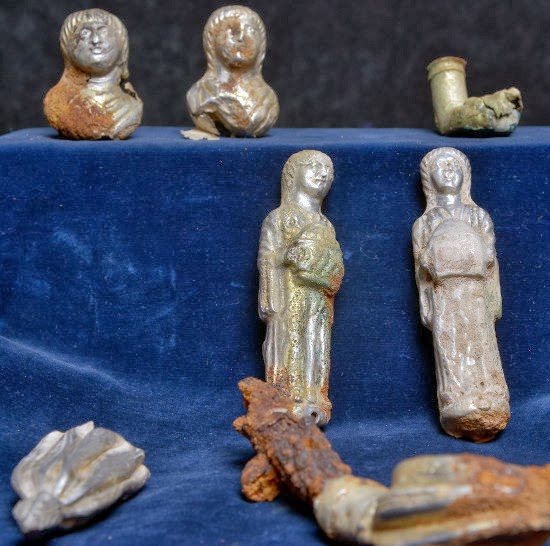
of barbarian treasures unearthed in Rhineland-Palatinate [Credit: DPA]
The haul from the western state of Rhineland Palatinate, worth about 1 million euros, includes silver bowls, brooches and other jewelry from ceremonial robes and small statues that adorned a grand chair, said archaeologists.
"In terms of timing and geography, the find fits in with the epoch of the Nibelung legend," Axel von Berg, the state's chief archaeologist was quoted by German media as saying.

hunters in a forest in Rhineland-Palatinate [Credit: DPA]
"But we cannot say whether it actually belongs to the Nibelung treasure," he said, adding that whoever owned it had "lived well" and could have been a prince.
The haul, which was found near Ruelzheim in the southern part of the state, is now at the state cultural department in Mainz, but officials suspect they may not have all of it.

barbarian treasures presented at a press conference in Mainz on Tuesday [Credit: DPA]
Prosecutors have begun an inquiry into the man who found the treasure because they suspect he may have sold some of it, possibly to a buyer abroad, the department said.
"The spot where the find was made was completely destroyed by the improper course of action," it said in a statement.

The finder is thought to have destroyed the chair while digging it up [Credit: DPA]
Whether the treasure is the famous "Rhinegold" or not, it seems to have been buried in haste by its owner or by robbers in around 406-407 AD, when the Roman Empire was crumbling in the area along the Rhine, von Berg said in a statement.
According to Nibelung legend, the warrior Hagen killed the dragon-slayer Siegfried and sank his treasure in the Rhine river. The Rhine has shifted its course many times over the centuries, so the treasure need no longer be under water.

to be worth over €1m [Credit: DPA]
Although it is the stuff of myths, the story is based on the downfall of the Burgundians in the 5th century.
Rhineland Palatinate boasts the most famous stretch of the Rhine, dotted with castles and steeped in legend that has inspired German poets, painters and musicians.
Author: Madeline Chambers | Source: Reuters [February 19, 2014]